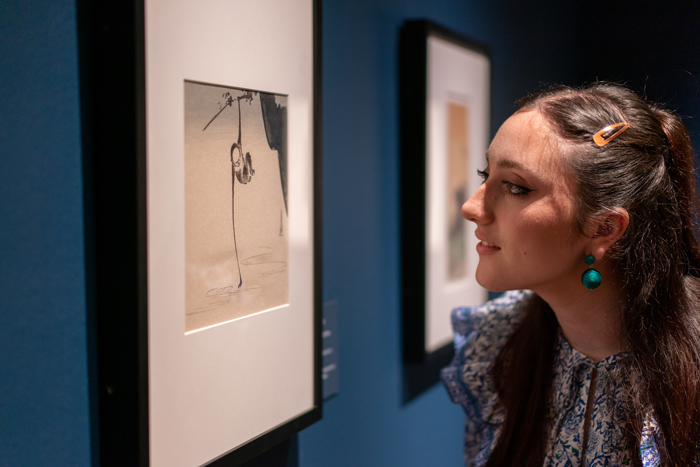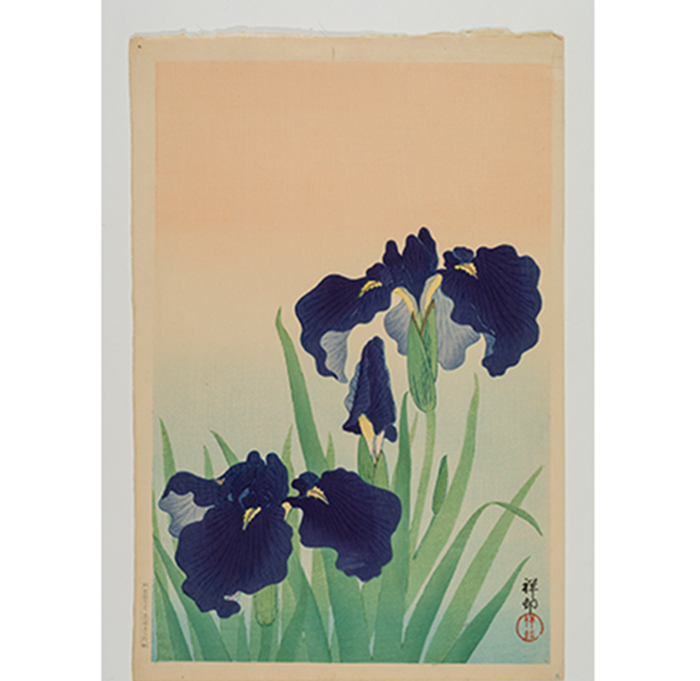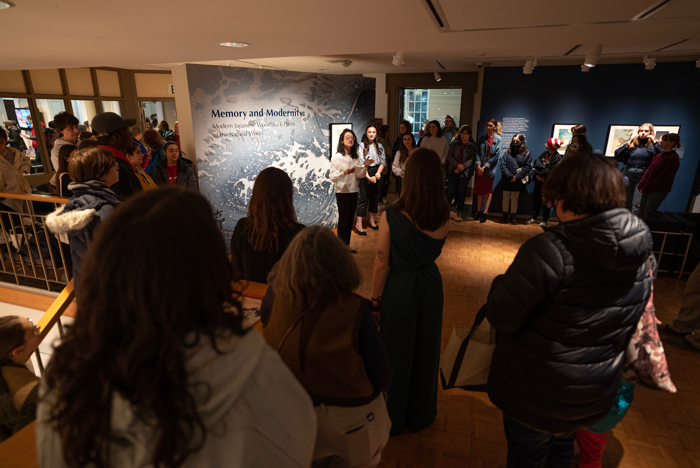On Memory and Modernity: Student Curators Present Exhibition, Research on Japanese Prints

Memory and Modernity: Japanese Woodblock Prints of the Natural World, continues at The Trout Gallery through April 15. Photo by Dan Loh.
by MaryAlice Bitts-Jackson
Roughly a century after the post-WWI-era craze for “bird-and-flower” prints swept across the Western world, Dickinson student curators are reviving the artistry and vibrancy of the genre on campus. Titled Memory and Modernity: Modern Japanese Woodblock Prints of the Natural World, this year’s senior art-history exhibition opened March 3 and continues through April 15 at The Trout Gallery. It’s curated by the class of 2023’s art-history majors, Ellie Mariani, Sydney Nguyen and Ava Noel Zadrima, under the direction of Assistant Professor of Art History Ren Wei, the Tamar and Emil '53 Weiss Chair in Asian Art.
Throughout the fall semester, the students rigorously researched Japanese prints from the Trout’s permanent collection and took a studio workshop with Professor of Art Todd Arsenault so they could more deeply appreciate the laborious woodcut-print process. Then they developed a curatorial vision, designed the exhibition, and researched and wrote essays for a full-color, professional catalogue to accompany the show.
As the student curators note, the “bird-and-flower” genre of East Asian prints includes depictions of a variety of animals and plants that were rich in symbolism. Many of the earlier works were originally created to mark auspicious events, while many later works—which sometimes involved different processes and techniques—were produced specifically for the burgeoning Western market. Landscapes, birds, flowers, kabuki actors and beautiful women are common themes of these works. Irises (Ohara Koson [1877-1945]), shown below, was created specifically for the Western market in 1926 and showcases one of the most depicted motifs in Japanese art, writes Mariani. Cranes, said to mate for life, are another common motif, signifying fidelity, loyalty and longevity.

Irises, Ohara Koson (1877-1945).
In her scholarship, Zadrima contrasts Oriental animal prints with Western scientific illustrations of animals. In the often humorous prints, she writes, animals were the main characters of narratives and were often used to convey political messages, create “psychological distance from painful events,” and depict people’s habits and superstitions.
A major shift in the ways the prints were produced occurred during the 20th century, notes Nguyen. The shin-hanga (“new print”) movement, initiated by prominent print publisher Wantanabe Shozaburo (1885-1962) revitalized traditional woodblock techniques, with division of labor in the design, carving, printing and publishing the works. During the sosaku-hanga, or creative print, movement, artists would design, carve, print and sometimes publish their own works.
As the students researched their subjects, wrote and edited the catalogue, developed their curatorial vision, and produced the didactic and wall labels, they gained exceptional preprofessional experiences in collaborative work, project management, writing, design and research—skills that can lead to success in a variety of fields.
They also sharpened their cultural awareness and cultural literacy, as Zadrima noted. "Professor Ren continually challenged us to be informed of Western biases when looking at the art from our show," she explains. "This open-mindedness is applicable outside of the classroom and is an important life skill."

The Trout Gallery hosted an opening reception for the Memory and Modernity exhibition Friday, March 3. Photo by Joe O'Neill.
TAKE THE NEXT STEPS
Published March 6, 2023